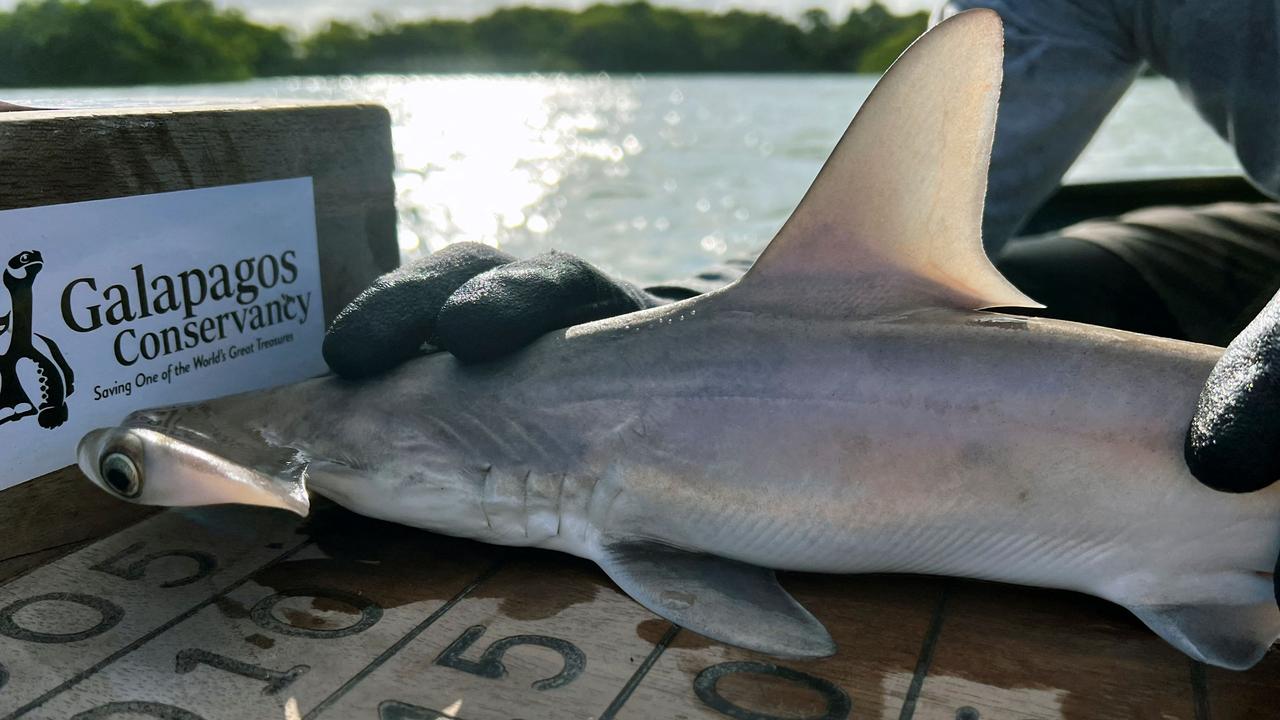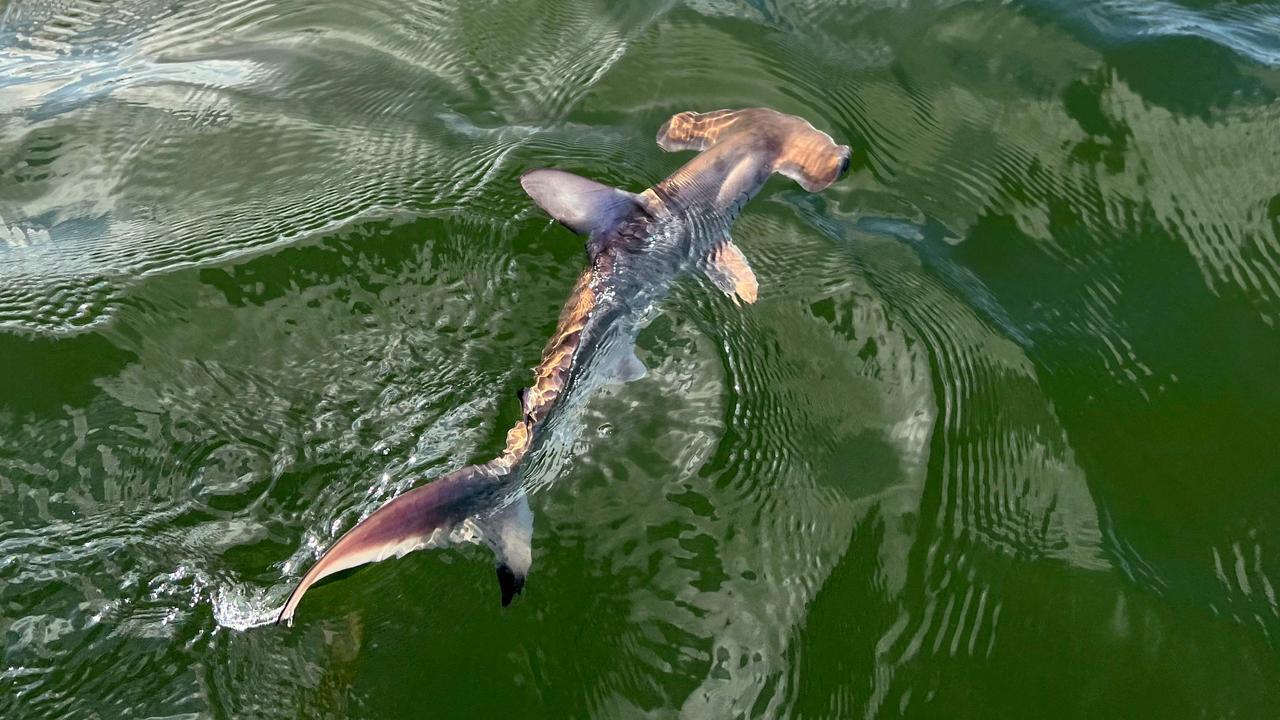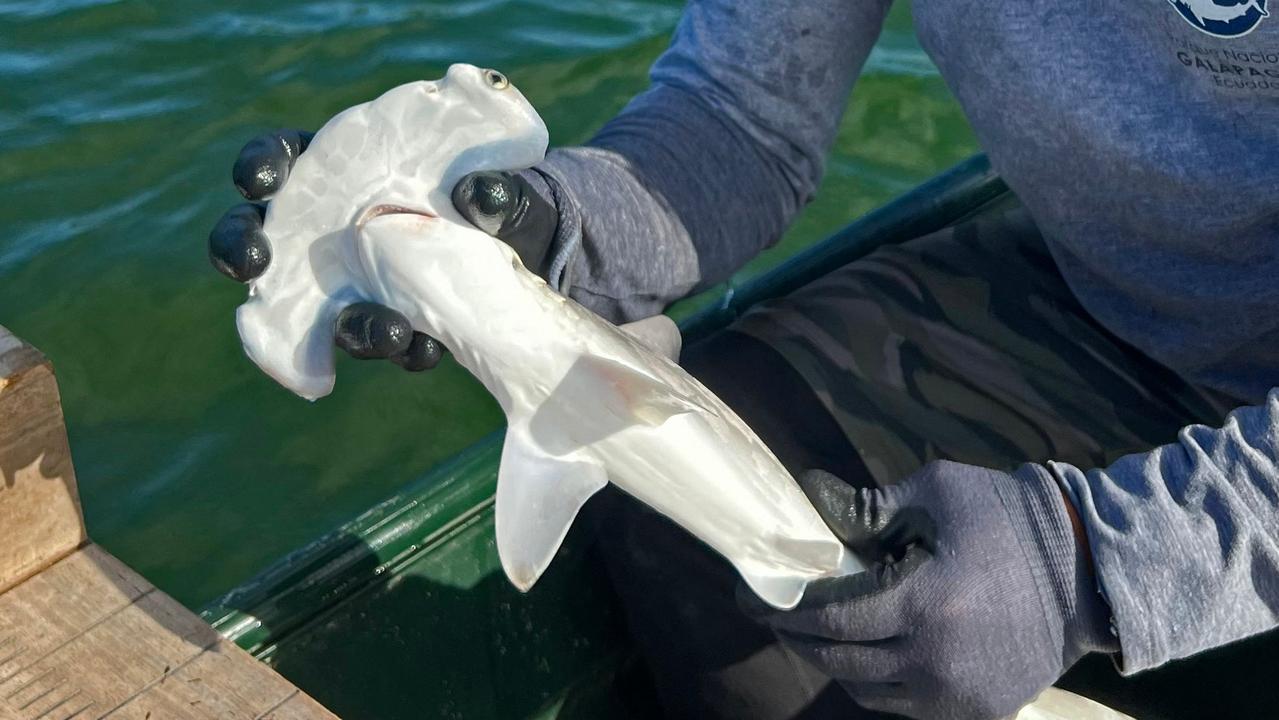Hammerhead shark nursery discovered at Galapagos Islands
The Galapagos Islands are home to many animals that can’t be found anywhere else in the world – and now scientists have discovered a nursery that could help protect the area’s threatened hammerhead sharks

READING LEVEL: GREEN
A nursery of baby hammerhead sharks has been discovered off Ecuador’s Galapagos Islands, a finding that could help protect the species from the threat of extinction*.
The haven* for hammerhead hatchlings*, who are less than a year old, was discovered near Isabela Island, the Galapagos’ largest island, and offers refuge* for the sharks during mating and early development stages.
“The discovery of these new breeding areas is very important, especially for the hammerhead shark,” said Galapagos National Park ranger Eduardo Espinoza.
“It is an iconic* species for the Galapagos, but it is in critical* danger of extinction.”

The International Union for Conservation of Nature (IUCN) considers the scalloped hammerhead shark, the species found in the Galapagos, as “critically endangered”.
It is largely threatened by commercial fishing* and demand from East Asia for their fins, which are used to make shark fin soup.
Researchers spent months scouring* the archipelago* for possible nursery sites as part of a hammerhead shark monitoring program.

Scientists had previously identified two other locations with similar characteristics* on nearby islands within the Galapagos Marine Reserve.
“We managed to include these nurseries in a list of important areas for shark conservation, a new protection category under the IUCN,” Mr Espinoza said.
The exact location of the nurseries has not been revealed in order to protect the species.
Some of the sharks at the nurseries have been tagged so that scientists can monitor their migration* patterns and determine how they interact* with sharks elsewhere.

The Galapagos Marine Reserve is one of the largest and most diverse* in the world. It covers an area of 198,000sq km and contains about 30 species of sharks.
The Galapagos Islands contain flora* and fauna* found nowhere else in the world, including giant tortoises, flightless cormorants and marine iguanas.
British scientist Charles Darwin, who studied nature, visited the islands in 1835 and developed his theory of evolution by natural selection based on his findings.
Darwin’s famous theory states that all living things are struggling to survive but it is those with the most helpful traits for their environment that are the most successful at surviving. These successful survivors then pass on their helpful traits to their young. This is how animals change, or evolve, over hundreds of years.

GLOSSARY
- extinction: when a species no longer exists
- haven: safe place
- hatchlings: young animals that have recently emerged from their eggs
- refuge: safe place
- iconic: famous as a symbol of a time or place
- critical: very serious or important
- endangered: at risk of become extinct
- commercial fishing: fishing that is done for business rather than as a hobby
- scouring: searching very carefully
- archipelago: a group of islands or an area of sea where there are many islands
- characteristics: features or qualities
- migration: movement of animals from one area to another
- interact: communicate or be involved with
- diverse: having many different types of things
- flora: plant life
- fauna: animal life
EXTRA READING
Sharks use Earth’s magnetic field as GPS
Hope from ‘extinct’ species rediscovered
Inside the shark tank at Sea Life Aquarium
Last Galapagos tortoise helping humans
QUICK QUIZ
- Off which group of islands was the hammerhead shark nursery found?
- What are the main threats to the scalloped hammerhead shark?
- How big in area is the Galapagos Marine Reserve?
- Which British scientist visited this area in 1835?
- What famous theory did he develop based on the findings from his visit?
LISTEN TO THIS STORY
CLASSROOM ACTIVITIES
1. Write a lullaby
A lullaby is a rhyme or song that can help a baby go to sleep. Write the words for a lullaby for the baby hammerhead sharks. Your purpose is to help keep the baby sharks calm and to help them to feel safe in their nursery.
Time: allow 20 minutes to complete this activity
Curriculum Links: English, Science, Critical and Creative Thinking
2. Extension
Why are the Galapagos Islands so important? Use the information in the story, and perhaps your research skills, to create a poster or graphic that shows other students why the Galapagos Islands must be protected.
Time: allow 30 minutes to complete this activity
Curriculum Links: English, Science, Geography, Visual Communication Design
VCOP ACTIVITY
Imaginative dialogue
Imagine you are visiting the Galapagos Islands and have the chance to talk to one of the park rangers.
Create a conversation between yourself and the park ranger, using facts and details from the article to help make your dialogue as realistic as possible.
Go through your writing and highlight any punctuation you have used in green. Make sure you carefully check the punctuation used for the dialogue and ensure you have opened and closed the speaking in the correct places.

